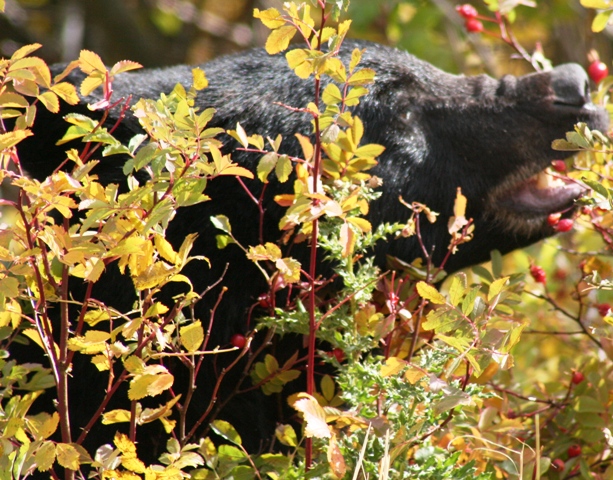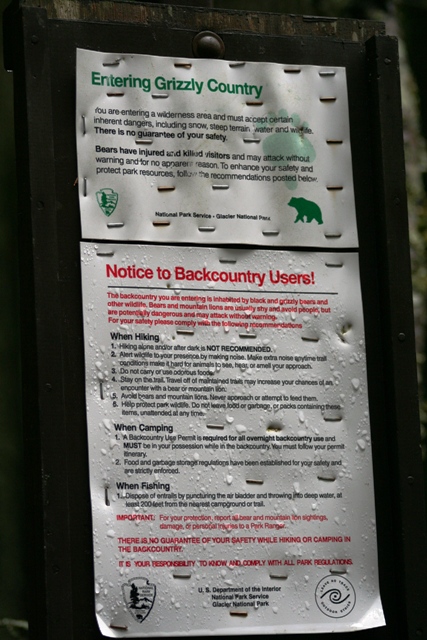If you haven’t already done so you should make yourself heard on the issue of firearms in National Parks. Our opponents are not quiet on the topic and we must not be either. Here is what the bigots are saying:
The NRA Wants Loaded Guns in Parks. What do YOU Want?
That’s right, guns in parks. LOADED guns in parks. For some reason, the NRA thinks it’s a great idea to let anyone and everyone possess loaded weapons in our national parks. Visitor safety? Who cares, right? You care. And you know that our current policies are smart and sound, and protect the rights of gun owners and visitors’ safety equally. Allowing loaded guns in parks poses a threat to wildlife, park visitors, and puts our already over-burdened park rangers at even greater risk. The Bush Administration has opened up the regulations for comment. If they want comments, let’s not disappoint them. Submit your comments TODAY and tell them to keep the current regulations in place. Take action!
Here is what they are suggesting people say on the topic:
Millions of visitors visit our national parks each year. They visit the parks because they offer a glimpse into America’s heritage. They offer the unique opportunity for families to experience peace and reflect in a safe environment. But opening the national parks to loaded weapons could change that forever.
Today’s national security threats make the protection of these iconic places and the millions of people from around the world who visit them a serious concern deserving of special vigilance. Requiring guns to be stored and unloaded is no more onerous a limitation on the rights of law-abiding citizens than requiring them to be searched or pass through a metal detector to enter a federal building.
We cannot put the safety of visitors at risk because of the political agenda of one organization. I urge you to keep the current regulations in place.
There is a big difference between the interior of a federal building with armed law enforcement close by and the deep woods of some national park. Here are some hints. These are actual pictures I took in a National Park:


Here is the actual proposed regulation change.
Here, here and here is the best advice I have seen on what to say to our Washington D.C. servants.
Here is the electronic submission form.
Do the right thing and don’t let the bigots win this one.

ADVISORY TO HIKERS
Yellowstone National Park is home to a wide variety of wildlife, some of which can be dangerous to hikers. Yellowstone has a significant population of two species of bear: the American Black Bear (Ursus americanus) and the Grizzly (Ursus arctos horribilis). Normally these bears will avoid people, but there are several practices the Park Service recommends to hikers to reduce the chance and the severity of an encounter.
STAY ON THE TRAILS – Bears tend to avoid the marked trail areas.
SCENT – Bears are attracted to scent, so:
1) Dispose of all foodstuffs and wrappings in airtight containers, and preferably dispose of them in the Park provided bear-proof trash recepticles. If in primitive camping areas, burn or bury the materials rather than carry them on your person.
2) Refrain from wearing perfume or cologne when on the trail, and don’t chew gum.
NOISE – Bears have an acute sense of hearing.
An encounter with a bear may result in an attack if the bear is startled or if young cubs are present. To reduce the possibility of surprising a bear, the park recommends attaching small bells to your boot laces. The unnatural noise of the bells may alert bears that you are in the area, and they should avoid you.
DEFENSE IN CASE OF ATTACK
The National Park Service prohibits visitors from carrying firearms for self-protection. If attack seems imminent, the use of oleoresin capsicum sprays (pepper sprays) can be effective.
Do not run. Bears are much faster than humans and they can run you down.
Do not attempt to climb a tree. Bears climb better than humans as well, and can be quite tall when standing upright.
DROP TO THE GROUND AND PLAY DEAD – it is your best chance to avoid serious injury or death. If you do not appear to be a threat, the bear may leave you alone.
BEAR SIGN
If, while hiking, you come across bear spoor it may be helpful if you can identify what type of bear is in your vicinity. Using a stick or similar instrument, break up the spoor and identify the contents. Black bear spoor may contain partially digested berries, insect parts, and vegitation. Grizzly bear spoor may contain small bells and smell like pepper.
For a moment there I thought you had just copied the sign. If I wasn’t the engineer type and read every detail I would have missed that last sentence.
Yes, that is a good one. 🙂
The electronic form is still accepting comments, but the end of the PDF file says: